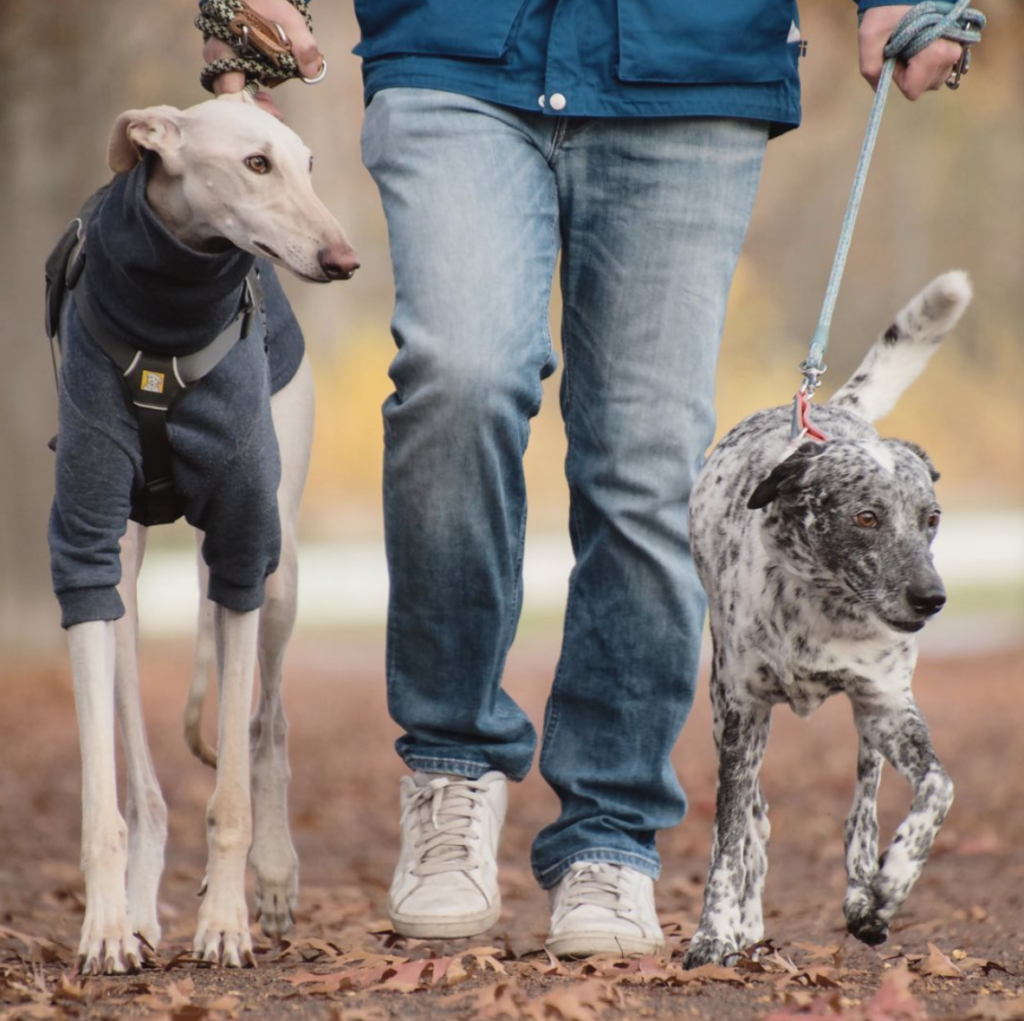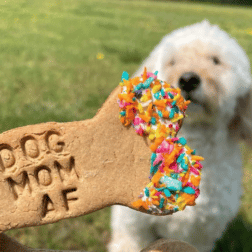Taking a nice walk with your dog is one of the many great pleasures of dog companionship. Of course, for some of us walking our dogs can be more of a chore than anything. As a dog trainer (with Andrea Arden Dog Training), my clients frequently ask for help with their dogs who have poor walking manners. Thankfully, good walking skills can be taught and the process can be fun!
Walking manners are very important. I have felt dread at times when getting out of bed and preparing myself for a morning walk. Walking a large dog who wants to get from A to B in record time can be a physical struggle that can lead to pain. Even a small dog that pulls incessantly or lunges at other dogs can become tiresome. Poor leash skills can also be a safety concern in a big city and they can also affect the relationship you have with your dog.
For these reasons, it doesn’t completely surprise me when I’m asked whether a prong collar will help. A prong collar can seem like a simple solution with many proponents swearing by the quick results. But is there another way?
To Prong or Not to Prong

Prong collars have been used and recommended by dog trainers for many years. Unfortunately, the long standing use of prong collars does not mean their use is without risk. Incorrect use of prong collars can cause damage to the thyroid, trachea, esophagus and soft tissue of the neck. In addition to this, studies suggest that the use of aversive training methods can increase the likelihood of other behavioral issues like fear, reactivity or aggression. Your dog may also suffer loss of confidence and reduced ability to learn new tasks. There are however effective alternatives that are less punitive and have lower risk of negative side effects.
How can I Improve my dogs walking?

Training your dog to walk by your side using reward based training is the most effective and holistic solution to walking politely on leash. A prong collar may reduce pulling, jumping or lunging, but this shouldn’t be mistaken for good leash skills. Remove the prong collar and the unwanted behaviors return.
In fact, taking a reward-based approach can actually strengthen the relationship between you and your dog. Changing our own behavior and focusing on what our dogs do right rather than what they do wrong can reduce frustration for the human and the dog. Focusing on the “wins” helps teach your dog the right way to do things.

That said, reward based training isn’t always a quick path. Walking politely on a leash is a skill to be learned. Learning skills takes time and becoming proficient takes practice. Some dogs can learn this skill quickly and will require little in the way of reinforcement. For other dogs, it will take patience, consistency, and a good understanding of what motivates your dog. There may be times when it feels like an uphill battle, but place trust in science. Reinforcement increases behavior. The result will be a confident companion that walks by your side because they enjoy it and choose to do so. That is definitely worth the wait. This sense of accomplishment can’t be matched by a prong collar.
Other Alternatives to a Prong

Another alternative to a prong collar is the use of a front clip harness. A front clip harness allows the leash to be attached to a clip located near the dog’s chest. This small adjustment means the dog will be less successful when pulling and makes it easier for you to handle your dog. A well designed and fitted front clip harness will remove pressure from the dog’s neck and ensure their natural range of motion is unrestricted.
Below are some of my favorite front clip harnesses:
- 2Hounds Design Freedom No-Pull Harness (starting at $33.00)
- Blue-9 Balance Harness (starting at $39.95)
- Softouch Concepts SENSE-ation Harness (starting at $24.50)
I consider a front clip harness an essential tool to be used for dogs that pull persistently. At the same time, a front clip harness shouldn’t be considered a long term solution to address poor leash skills. Rather, they’re tools that assist you whilst your dog learns how to walk politely on a leash.
When it comes to teaching your dog good leash skills, my advice is to start the process early. Teaching them how you would like them to behave on leash before undesirable habits form is an easier process than extinguishing those habits.
Whilst the best opportunity for this is when your dog is a puppy, all hope is not lost if you missed the boat. Old dogs can learn new tricks too! If you’re unsure where to start or need help, look for a professional dog trainer who uses reward based methods. They can guide you through the steps involved and offer personalized advice.
What’s your favorite brand of leashes and collars? Comment below! Don’t forget to become a Spotter for more dog training tips and tricks.





Conversation